More than a century after prolific gun designer John Moses Browning began work on what was to become the M2 .50 caliber heavy machine gun, the United States Department of Defense announced in October 2023 that U.S. Ordnance, McCarran, Nevada, was awarded a $16,364,451 firm-fixed-price contract to produce another run of the now infamous “Ma Deuce.”
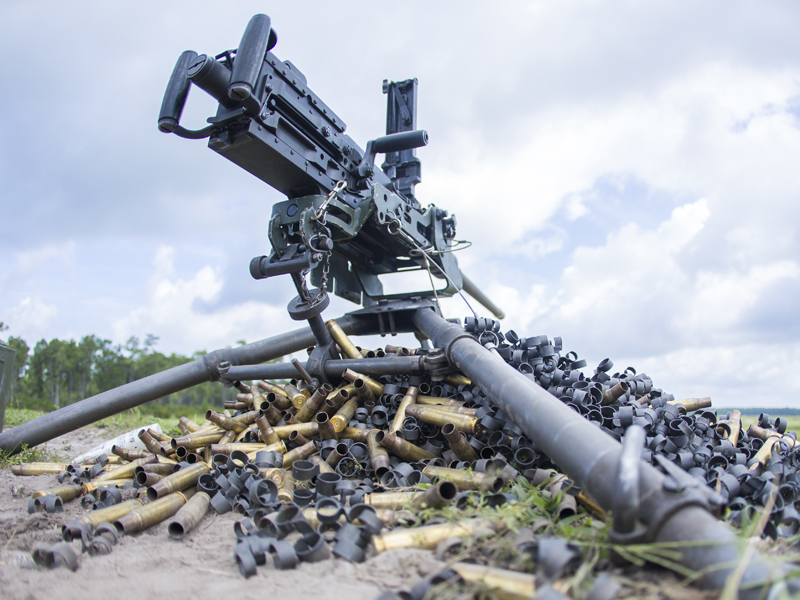
These will be the M2A2 version, which was developed 15 years ago by the firm. It features a quick-change barrel that allows a single operator to swap it out in less than 15 seconds, as well as a single-breech lock system. Despite the improvements, this upgraded model is still compatible with legacy M2HB components.
However, the U.S. military won’t actually be receiving the new firearms – rather they’ll make their way to the Kingdom of Jordan.
According to the Pentagon, “Work will be performed in McCarran, Nevada, with an estimated completion date of May 1, 2024. Fiscal 2023 Foreign Military Sales (Jordan) funds in the amount of $16,364,451 were obligated at the time of the award. Army Contracting Command, Newark, New Jersey, is the contracting activity.”
Jordan is just one of nearly a hundred nations around the globe that has adopted the M2 machine gun and its variants. Currently, three U.S. firms – General Dynamics, U.S. Ordnance, and Ohio Ordnance Works, Inc. – as well as FN Herstal (Fabrique Nationale) in Belgium, and Manroy Engineering in the UK, produce the .50 caliber heavy machine gun.
It is a weapon that has been in use in countless wars since it first entered service 90 years ago.
Origin of the M2
As perhaps one of the greatest – if not the greatest gun designer – John Browning had much experience with machine guns prior to the M2. His first effort in automatic weapons was the Colt Browning Model 1895, which utilized an operating system that was based on the lever-action rifles that he designed for Winchester. It performed quite well during the Spanish-American War, and the Model 1895 was even adopted by militaries around the world – seeing service with numerous militaries in the First World War.
However, Browning was also a perfectionist and he continued to work on the concept. In 1903, he filed a patent for a recoil-powered automatic gun, one that was similar in concept if not actual design to Hiram Stevens Maxim’s machine gun. Though both Browning’s and Maxim’s firearms employed the principle of recoil operation, water cooling, and forward ejection, there were notable differences in the respective designs.
Browning’s machine gun featured a sliding-block locking mechanism that saved weight but more importantly reduced the complexity of the operation, while a less important distinction was the fact the Browning fed left-to-right, opposite of the Maxim design. For nearly a decade the design languished, but he revisited it in 1910 and produced a functional prototype.
He continued to tinker with his firearm as the First World War broke out in Europe. Browning’s new machine gun caught the attention of the U.S. military – which was woefully lacking in such weapons. The United States Army Ordnance Department had only itself to blame. It had shown little interest in such weapons for more than two decades, which is why Browning didn’t push forward with his concept.
The horrors of the First World War changed minds quickly.
Enter the M1917 and M1919 Machine Guns
Machine guns were clearly the future, but those in the U.S. military’s arsenal were outdated and even outclassed. Browning quickly arranged a test at the Springfield Armory in Springfield, Massachusetts, in May 1917, and his weapon performed extremely well. It was adopted as the U.S. Model 1917, chambered in the M1906 .30-06 ball cartridge, and became the U.S. Army’s principal heavy machine gun.
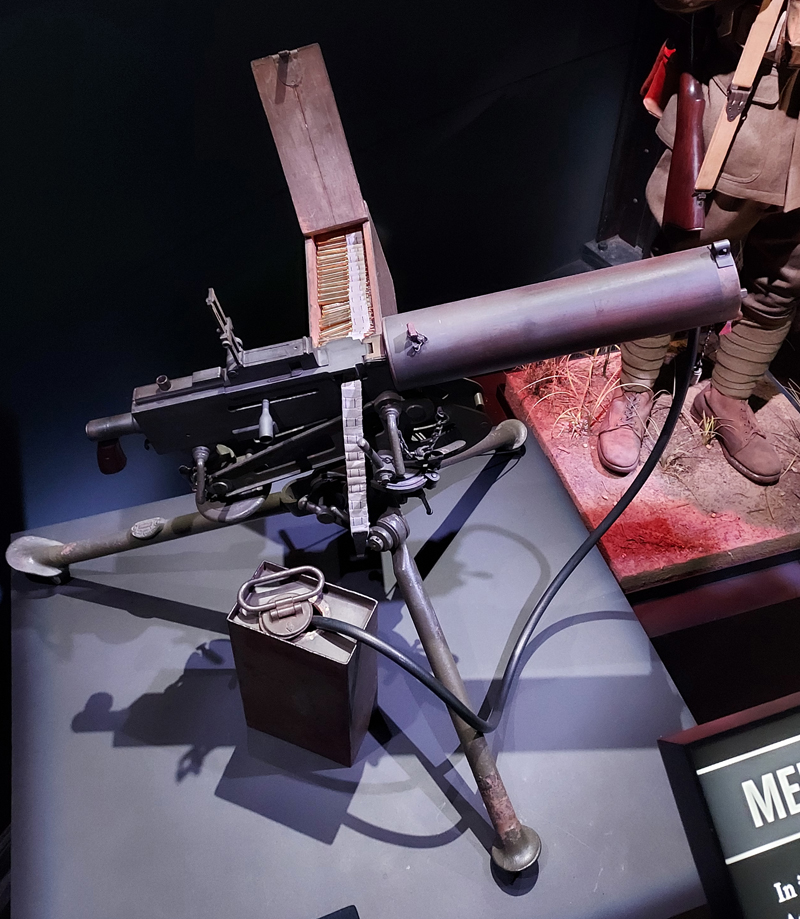
Despite its potential, it only saw limited service during World War I, but it wasn’t a fault of the design. Production delays meant that only about 1,200 of the new heavy machine guns ever made it to Europe and those were only used in the closing stages of the war. Yet, the Browning design proved successful, and the more than 128,000 M1917s would eventually be produced in total.
Even as the war came to an end, Browning also continued to focus on further improving the weapon. Browning had seen how the German military sought to make its Maxim-based MG08 more “mobile” by adding a pistol grip and buttstock. It was still a behemoth to carry.
Instead, Browning realized that such a weapon would still likely need to be fired from a tripod. Instead of trying to make an automatic rifle – which the designer was already doing with his Browning Automatic Rifle (BAR) – he opted to make a more portable fixed machine gun.
He ditched the water jacket, and this resulted in the U.S. Model 1919, which was still chambered for the powerful and effective .30-06 cartridge. But unlike the other ground-mounted machine guns of the era the M1919 featured an air-cooled barrel, which was heavier to reduce overheating, but it was also easier to maintain in combat conditions than the M1917 machine gun or its water-cooled cousins.
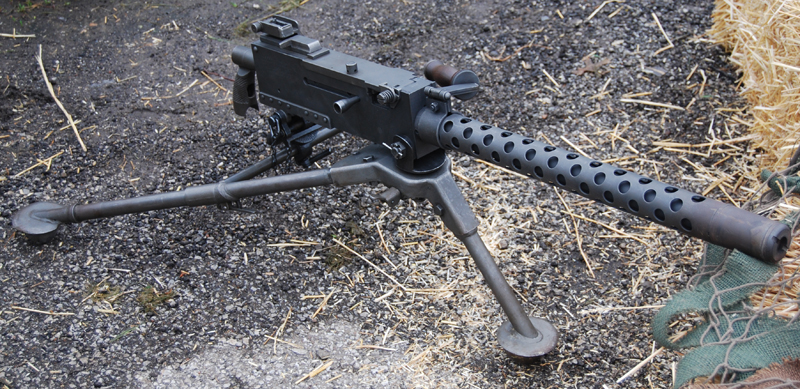
A Truly Heavy Machine Gun
At the same time, American Expeditionary Force commander Gen. John J. Pershing called up the Army Ordnance Department to develop an even larger “heavy machine gun.” Browning answered the call and began to redesign his M1917 machine gun for a larger and more powerful round and that resulted in the development of the .50 inch (12.7mm) caliber firearm cartridge. A prototype weapon – was tested in October 1918, but it was heavy, difficult to control, and fired too slowly for an anti-personal role.
The “supersized” machine gun impressed U.S. military officials enough that both the U.S. Army and U.S. Navy adopted it as the M1921, but it was mostly employed as a static anti-aircraft weapon due to its 121-pound weight. An improved version, the M1921A1, was able to reduce its mass, but it was still far from an ideal solution.
Browning then took the basic design principles of the M1919 and applied them to what was to become the M2 .50 caliber machine gun. Though Browning passed away in 1926, work continued on the weapon, which was developed with a thicker-walled, air-cooled barrel. Designated the “Browning Machine Gun, Caliber .50, M2, Water-Cooled, Flexible,” it was more commonly known as the M2HB (Heavy Barrel).
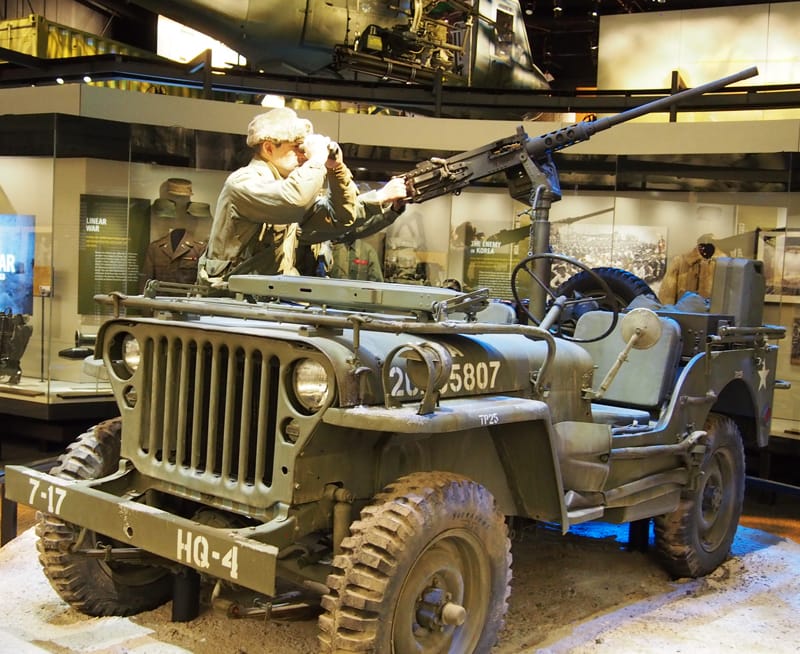
M2HB Flexible saw extensive service from the late 1930s until 2010 when the U.S. military began shifting to the updated M2A1. It employed a fixed headspace and timing, which allowed for safer operations, as well as a much more efficient flash hider that reduced the weapon’s signature by 95 percent at night.
Before the Second World War, the M2 was also adapted for use as a remote or flexible aircraft gun. For fixed (offensive) or flexible (defensive) guns used in aircraft, the dedicated M2 version is designated the “.50 Browning AN/M2” or the “12.7 mm AN/M2.” It could be fired from the electrically operated remote-mount solenoid trigger.

As it would be cooled by the aircraft’s slip-stream, the 12.7 mm AN/M2 was fitted with a lighter 36-inch (91 cm) barrel, which reduced the weight of the weapon while also increasing its rate of fire. While the M2HB could fire 450 to 600 rounds per minute, that was increased to 750 to 850 rpm with the AN/M2 version. An even faster-firing Browning M2 was developed during the Second World War as the AN/M3, which could unleash upwards of 1,200 rounds per minute! An upgraded version of the M3 series is still employed by the U.S. military for use on aircraft.
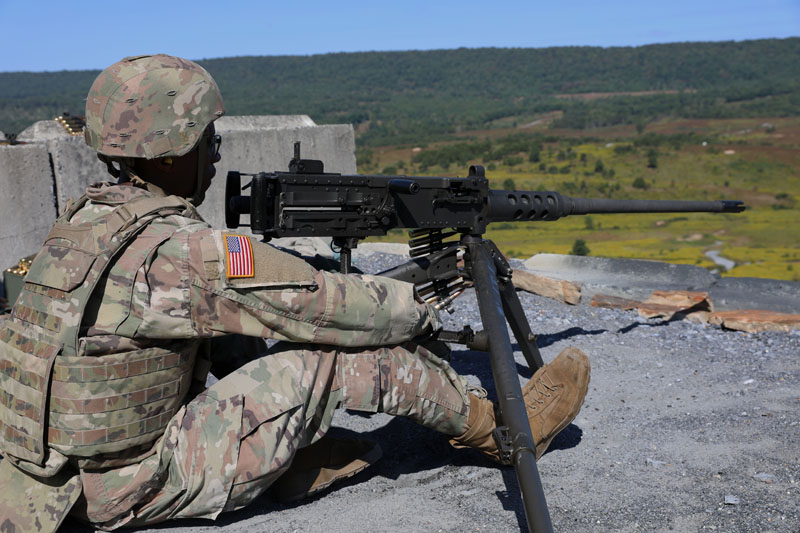
With the latest improvements, it won’t be hard to believe that the M2 won’t still be employed by militaries around the world for another 100 years.


